មាតិកា
Honey agaric brick red (Hypholoma lateritium)
- ផ្នែក៖ Basidiomycota (Basidiomycetes)
- ផ្នែករង៖ អាហ្គារីកូម៉ីកូទីណា (Agaricomycetes)
- ថ្នាក់៖ Agaricomycetes (Agaricomycetes)
- ប្រភេទរង៖ Agaricomycetidae (Agaricomycetes)
- លំដាប់: Agaricales (Agaric ឬ Lamellar)
- គ្រួសារ៖ Strophariaceae (Strophariaceae)
- ពូជ៖ អ៊ីប៉ូឡូម៉ា (Hyfoloma)
- ប្រភេទ: Hypholoma lateritium (Mushroom red brick)
- False honeycomb brick-red
- False honeycomb brick-red
- Hypholoma sublateritium
- Agaricus carneolus
- Nematoloma sublateritium
- Inocybe corcontica

ក្បាល: 3-8 centimeters in diameter, sizes up to 10 and even up to 12 cm are indicated. In young ones, it is almost round, with a strongly tucked edge, then convex, becomes widely convex and, with time, almost flat. In the intergrowths, the caps of the brick-red false honey mushrooms are often deformed, as they do not have enough room to turn around. The skin of the cap is smooth, usually dry, moist after rain, but not too sticky. The color of the cap can be described as “brick red” overall, but the color is uneven, darker in the center and paler (pinkish-buff, pinkish to bright red, sometimes with darker spots) at the edge, especially when young, in older specimens, the hat darkens evenly. On the surface of the cap, especially at the edges, as a rule, there are thin “threads” – whitish hairs, these are the remains of a private bedspread.
ចាន: adherent evenly or with a small notch. Frequent, narrow, thin, with plates. Very young mushrooms are whitish, whitish-buff or creamy:
But they soon darken, acquiring a color from pale gray, olive gray to gray, in mature specimens from purplish gray to dark purplish brown.
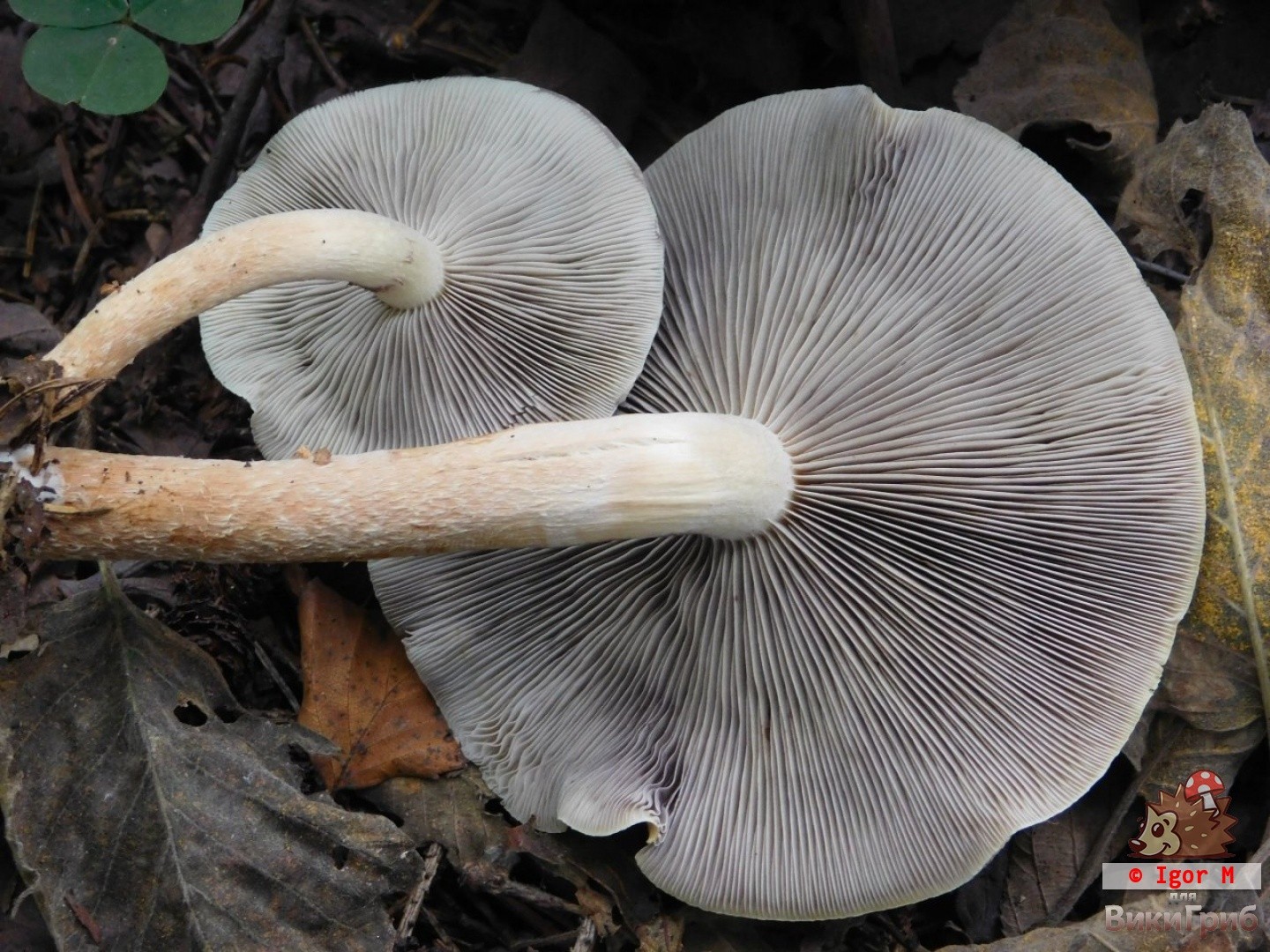
ជើង: 4-12 cm long, 1-2 cm thick, more or less even or slightly curved, often tapering considerably towards the base due to growth in clusters, often with a small rhizome. Hairless or finely pubescent in the upper part, often with an ephemeral or persistent annular zone in the upper part. The color is uneven, whitish above, from whitish to yellowish, light buff, brownish shades appear below, from light brown to rusty brown, reddish, sometimes with “bruises” and spots of yellow. The leg of young mushrooms is whole, with age it is hollow.
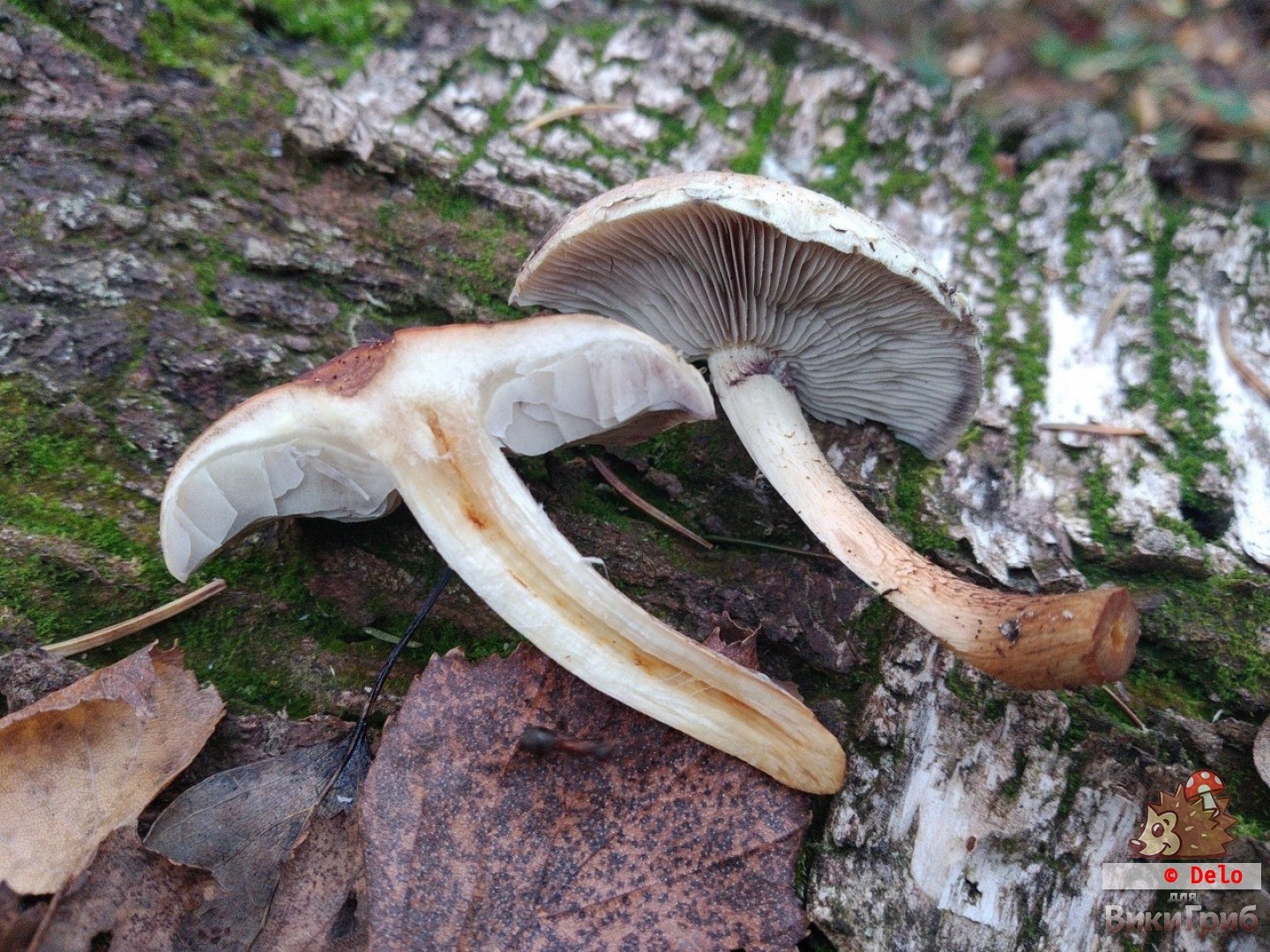
ចិញ្ចៀន (the so-called “skirt”): clearly absent, but if you look closely, in the “annular zone” in some adult specimens, you can see the remains of “threads” from a private bedspread.
ផូស: firm, not too brittle, whitish to yellowish.
ក្លិន: no special smell, soft, slight mushroom.
រសជាតិ. This should be said in more detail. Different sources give very different taste data, ranging from “mild”, “slightly bitter” to “bitter”. Whether this is due to the characteristics of some specific populations, weather conditions, the quality of the wood on which mushrooms grow, the region, or something else is not clear.
It seemed to the author of this note that in regions with a milder climate (the British Isles, for example), the taste is more often indicated as “mild, sometimes bitter”, the more continental the climate, the more bitter. But this is only an assumption, not scientifically confirmed in any way.
ប្រតិកម្មគីមី: KOH brownish on cap surface.
ម្សៅ spore: purple brown.
លក្ខណៈពិសេសមីក្រូទស្សន៍: spores 6-7 x 3-4 microns; ellipsoid, smooth, smooth, thin-walled, with indistinct pores, yellowish in KOH.
False honeydew brick-red is widely distributed in Europe, Asia, and America.
It bears fruit from summer (late June-July) to autumn, November-December, until frost. It grows in groups and in aggregations on dead, rotten, rarely living wood (on stumps and near stumps, on large dead wood, dead roots immersed in the ground) of deciduous species, prefers oak, occurs on birch, maple, poplar, and fruit trees. According to the literature, it can rarely grow on conifers.
Here, as with information about taste, the data are different, contradictory.
So, for example, some -(our country-)-language sources refer the brick-red mushroom to inedible mushrooms or to conditionally edible 4 categories. Two or three single boils are recommended from 5 to 15-25 minutes each, with the obligatory draining of the broth and washing the mushrooms after each boil, after which the mushroom can be fried and pickled.
Raw or undercooked, these mushrooms can cause gastrointestinal upset. Therefore, many English-language sources do not recommend tasting raw brick-red honey agaric, even for identification purposes, and if you do try, in no case swallow it.
There are no reliable data on identified toxins. There is no information about any serious poisoning.
When Jacob Christian Schaeffer described this species in 1762, he named it Agaricus lateritius. (Most agaric fungi were originally placed in the genus Agaricus in the early days of fungal taxonomy.) Over a century later, in his book Der Führer in die Pilzkunde published in 1871, Paul Kummer transferred the species to its current genus Hypholoma.
Hypholoma lateritium synonyms include a fairly large list, among them should be mentioned:
- Agaricus lateralis Schaeff.
- Agaricus sublateritis Schaeff.
- Bolton’s pompous agaric
- Pratella lateritia (Schaeff.) Gray,
- Cooke scaly deconic
- Hypholoma sublateritium (Schaeff.) Quél.
- Naematoloma sublateritium (Schaeff.) P. Karst.
In the US, most mycologists prefer the name Hypholoma sublateritium (Schaeff.) Quél.
In the -speaking tradition, the names “Brick-red honey agaric” and “Brick-red false honey agaric” have been established.
Hypholoma (Gyfoloma), the name of the genus, roughly translated means “mushrooms with threads” – “mushrooms with threads.” This may be an allusion to the filamentous partial veil that connects the cap margin to the stalk, covering the plates of very young fruiting bodies, although some authors believe this is a reference to the filamentous rhizomorphs (basal mycelial bundles, hyphae) that are visible at the very base of the stalk.
The specific epithet lateritium and its synonymous epithet sublateritium deserve some explanation. Sub just means “almost”, so that’s pretty self explanatory; lateritium is a brick color, but since bricks can be of almost any color, this is perhaps the most descriptive name in the mushroom kingdom; however, the cap color of brick red mushrooms probably matches most people’s idea of ”brick red” very closely. Therefore, the specific name Hypholoma lateritium has now been adopted, more than adequate.
ស្ពាន់ធ័រពណ៌លឿង (Hypholoma fasciculare)
Young sulphur-yellow false honey mushrooms are indeed very similar to young brick-red ones. And it can be quite difficult to distinguish them: the species intersect in regions, ecology and fruiting time. Both types can be equally bitter in taste. You need to look at the plates of adults, but not the elderly and not dried mushrooms. In sulfur-yellow, the plates are yellowish-greenish, “sulphur-yellow”, in brick-red they are gray with shades of purple, violet.
ថ្នាំ Hypholoma capnoides
Looks like a brick red is very conditional. The gray-lamellar one has gray plates, without yellowish tints in young mushrooms, which is recorded in the name. But the main distinguishing feature is the place of growth: only on conifers.
Video about the mushroom Honey agaric brick-red:
Photo: Gumenyuk Vitaliy and from questions in Recognition.









